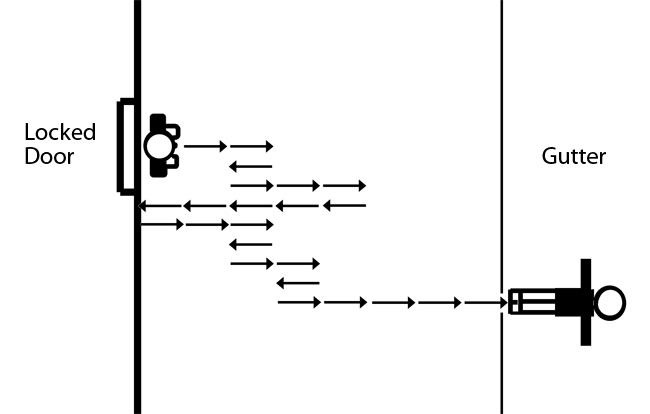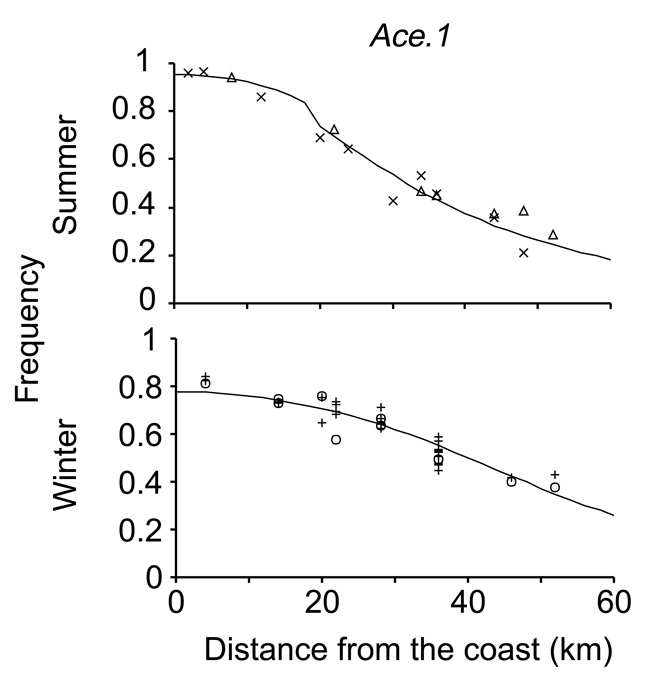« Prev Next »

The geneticist Theodosius Dobzhansky (1964) famously wrote "nothing in biology makes sense except in the light of evolution," and the field of ecology is no exception to this broadly-embraced principle. To study ecology without an understanding of evolutionary theory is to watch a sporting event without first learning the rules — players run, points are scored, whistles shrill, but the guiding principles underlying these events remain a mystery. With an understanding of the rules, however, even the smallest intricacies of the game can be appreciated, even loved. So it is with ecology: Evolution provides a canon by which we may better understand the interactions of organisms with their environments. In this section, we define evolution as it is understood to modern biology and as it applies to ecology.
Evolution is defined as the change in the inherited traits of a population of organisms through successive generations. When living organisms reproduce, they pass on to their progeny a collection of traits. These traits may be tangible and obvious, such as the patterns in a butterfly's wing or the number of scales on a crocodile, but they also include characteristics as relatively anonymous as the sequence of nucleotide bases that make up an organism's DNA. In fact, when we talk about evolutionary inheritance, the latter is what we are actually referring to: the transfer of genetic sequences from one generation to the next. When particular genetic sequences change in a population (e.g., via mutation) and these changes are inherited across successive generations, this is the stuff of evolution.
What Evolution Is Not
The term "evolution" is commonly misused, often accidentally but sometimes with purpose, so it is also necessary to clarify what evolution is not.
Most importantly, evolution does not progress toward an ultimate or proximate goal (Gould 1989). Evolution is not "going somewhere"; it just describes changes in inherited traits over time. Occasionally, and perhaps inevitably, this change results in increases in biological complexity, but to interpret this as "progress" is to misunderstand the mechanism. For instance, that single-celled organisms eventually gave rise to multicellular organisms might appear to exemplify directed movement towards so-called "higher" life-forms. But as Gould (1996) and others point out, there is a left-hand wall to complexity; by definition, the simplest possible organism can only become more complex or stay the same. In this sense, evolution is a "drunkards walk" (Figure 1), wherein certain lineages inevitably attain unexplored novelty in form and function. By the same token, terms like "reverse evolution" and "devolution" are nonsensical; similar traits and gene sequences may recur at different moments in biological history, but this is still just evolution: change over time.

A second important point is that evolution and natural selection are not equivalent terms. Natural selection is one force that can drive and influence evolutionary change, but other mechanisms can be equally important. Trait changes among the members of a population are not always a result of selective processes. For instance, the appearance and accumulation of a deleterious trait (e.g., a genetic disease) in a population should not be ascribed to direct selection for the trait in question. Similarly, alleles that have no effect on traits under selection may undergo mutations that do not influence the fitness of the organism carrying them. Proponents of the neutral theory of molecular evolution argue that many, if not most, of the genetic differences between species are selectively neutral. What follows is an overview of the variety of forces, including natural selection, that can drive or otherwise influence evolutionary change.
Microevolution and Macroevolution
One can distinguish between two general classes of evolutionary change: microevolution (change below the level of the species) and macroevolution (change above the level of the species).
Population ecologists, conservation biologists, and behavioral ecologists are most directly concerned with microevolutionary processes. These include shifts in the values and frequencies of particular traits among members of populations, often due to ecological processes such as the movement of organisms and changing environmental conditions as well as interactions with members of different species (e.g. predator-prey interactions, host-parasite interactions, competition) or the same species (e.g. sexual selection, competition). These processes can, but do not necessarily, lead to the formation of new species over time but instead result in fluctuating frequencies of traits within populations tracking ever-changing selective pressures (Thompson 1998). Since some microevolutionary processes may occur over just a few generations, they can often be observed in nature or in the laboratory.
An appropriate illustration of microevolution in action is the well-documented tendency for insects to rapidly develop resistance to pesticides (Gassmann et al. 2009). For example, during summer in Southern France, pesticides are applied to control Culex mosquitoes from the Mediterranean coast to about 20 km inland. Certain mosquito genes confer resistance to the pesticides but are costly in the absence of pesticides (Figure 2); frequencies of the pesticide-resistance gene increase during summers in areas where spraying is common, but do not increase in areas where spraying is not practiced. (Lenormand et al. 1999).

Usually macroevolutionary changes cannot typically be observed directly because of the large time scales generally involved, though many instances of macroevolutionary change have been observed in the laboratory (Rice & Hostert 1993). Instead, studies of macroevolution tend to rely on inferences from fossil evidence, phylogenetic reconstruction, and extrapolation from microevolutionary patterns. Often the focus of macroevolutionary studies is on speciation: the process by which groups of previously-interbreeding organisms become unable (or unwilling) to successfully mate with each other and produce fertile offspring.
Ecologists may be interested in macroevolution as a means to make inferences regarding present-day ecological questions. Scientists interested in modeling the effects of present-day climate change, for instance, can couple prehistoric climatological data with fossil-derived patterns of speciation and extinction to understand how contemporary animal and plant species are faring today and how they will fare in the future. For example, many marine invertebrates (e.g. corals, snails, clams) construct their shells using calcium carbonate harvested from ocean water. As anthropogenic CO2 accumulates in the atmosphere, a significant fraction of it dissolves into the ocean, releasing free hydrogen ions in the process and thus decreasing oceanic pH. Among other things, this ocean acidification reduces the amount of carbonate available to shell-making marine invertebrates that rely on it for their calcium-carbonate shells, making it difficult for them to make and maintain their shells.
By combining oceanic pH data from hundreds of millions of years ago with fossil records of foramifera (shell-making marine invertebrates), Zachos et al. (2005) show the effects that ocean acidification have had on the diversification and extinction of past marine invertebrate fauna. From these data, one can model current patterns of ocean acidification and begin to predict its effects on present-day and future marine animals (e.g. Orr et al. 2005).
Conclusion
Evolution describes changes to the inherited traits of organisms across generations. Evolutionary change is not directed towards a goal, nor is it solely dependent on natural selection to shape its path. Ecology, as with any biological discipline, is rooted in evolutionary concepts and best understood in its terms.
References and Recommended Reading
Dobzhansky, T. Biology, Molecular and Organic. American Zoologist 4, 443–452 (1964).
Hewitt, G. The genetic legacy of the Quaternary ice ages. Nature 405, 907–913 (2000).
Gassmann A .J. et al. Evolutionary analysis of herbivorous insects in natural and agricultural environments. Pest Management Science 65, 1174–81 (2009).
Gould, S. J. Wonderful Life: The Burgess Shale and the Nature of History. New York, NY: W. W. Norton and Company, 1989.
Gould, S. J. Full House: The Spread of Excellence from Plato to Darwin. New York, NY: Harmony Books, 1996.
Lenormand, T. et al. Tracking the evolution of insecticide resistance in the mosquito Culez pipiens. Nature 400, 861–864 (1999).
Orr, J. C. et al. Anthropogenic ocean acidification over the twenty-first century and its impact on calcifying organisms. Nature 437, 681–686 (2005).
Rice, W. R. & Hostert, E. E. Laboratory experiments on speciation: what have we learned in 40 years? Evolution 47, 1637–1653 (1993).
Thompson, J. N. Rapid evolution as an ecological process. Trends in Ecology and Evolution 13, 329–332 (1998).
Zachos, J. C. et al. Rapid acidification of the ocean during the Paleocene-Eocene thermal maximum. Science 308, 1611–1615 (2005).






























